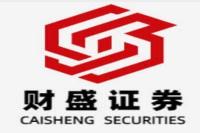Hong Kong Stock Market Surge: A Deep Dive into the Southbound Buying Spree
Meta Description: Uncover the reasons behind the massive HK$62.89 billion southbound trading surge on October 17th. Expert analysis reveals the driving forces, market implications, and future outlook for Hong Kong stocks. Learn about the intricacies of Southbound Connect and its impact on global investment strategies. #SouthboundTrading #HongKongStockMarket #ChinaMarket #InvestmentAnalysis #CapitalInflow
Imagine this: October 17th, 202X. The Hong Kong Stock Exchange is buzzing. Not a gentle hum, but a full-blown roar. Southbound funds – that is, money flowing from mainland China into the Hong Kong market – are pouring in at an unprecedented rate. A staggering HK$62.89 billion! That's not just a significant number; it's a seismic event that sends ripples across global financial markets. What caused this massive injection of capital? Was it a fleeting trend, a speculative bubble waiting to burst, or a sign of something much bigger – a fundamental shift in the global investment landscape? This isn't just about numbers on a spreadsheet; it's about understanding the complex interplay of geopolitical factors, economic indicators, investor sentiment, and the very future of Hong Kong's role as a global financial hub. We'll delve deep into the specifics, examining the potential drivers behind this surge, analyzing the implications for investors, both large and small, and exploring what this means for the longer-term trajectory of the Hong Kong stock market. Prepare for an insightful journey into the heart of this fascinating financial phenomenon. This isn't just another market report; it’s a story unfolding in real-time, and we're here to help you understand every twist and turn. So buckle up, because we're about to embark on a thrilling ride!
Southbound Trading: Understanding the Phenomenon
Southbound trading, facilitated by the Stock Connect scheme, allows mainland Chinese investors to directly access Hong Kong-listed stocks. This mechanism has significantly broadened the investor base for Hong Kong equities, leading to increased liquidity and market depth. But what makes a day like October 17th, with its record-breaking inflow, so noteworthy? Several factors often intertwine to create such surges. Let's break them down.
Potential Drivers of the October 17th Surge:
-
Macroeconomic Factors: A strong Chinese economy, coupled with perhaps a more favorable global economic outlook, can boost investor confidence and encourage capital flows into Hong Kong. Positive economic data releases from China, such as GDP growth figures or industrial production indices, frequently act as catalysts. Conversely, negative news from global markets could push investors towards perceived "safe haven" assets, leading to increased buying in Hong Kong.
-
Specific Sectoral Performance: Outstanding performance by specific sectors within the Hong Kong market can attract significant investment. For example, a surge in the tech sector might explain a substantial chunk of the inflow. Analyzing which sectors saw the most significant buying activity on that particular day offers crucial insight.
-
Regulatory Changes: Any changes in regulatory policies impacting the Stock Connect program or broader investment rules in mainland China could trigger shifts in capital flows. Easing of investment restrictions or the introduction of new incentives often stimulates increased southbound trading.
-
Investor Sentiment: Sometimes, it's simply the overall mood in the market. A wave of positive sentiment, fueled by media coverage or analyst reports, can trigger a buying frenzy. Conversely, negative sentiment can lead to rapid capital outflows.
-
Currency Fluctuations: Changes in the exchange rate between the renminbi (RMB) and the Hong Kong dollar (HKD) can influence the attractiveness of Hong Kong stocks to mainland investors. A favorable exchange rate makes Hong Kong assets more affordable, encouraging increased buying.
Impact on the Hong Kong Market:
The massive influx of capital on October 17th had several immediate and potential long-term effects:
- Increased Market Volatility: While the influx was positive, such large inflows can temporarily increase market volatility, leading to both sharp rises and potentially sharp corrections. This is something investors need to be aware of.
- Price Appreciation: The sheer volume of buying pushed up the prices of many Hong Kong-listed stocks, potentially creating short-term gains for investors already holding positions.
- Enhanced Liquidity: Increased trading volume improves market liquidity, making it easier for investors to buy and sell stocks without significantly impacting prices.
- Attracting Foreign Investment: The strong southbound flow can attract attention from international investors, potentially leading to further inflows from beyond mainland China.
Analyzing the Data:
While the raw number of HK$62.89 billion is impressive, a truly in-depth analysis would require digging into the specifics. Which specific stocks saw the most significant buying pressure? Were there any discernible patterns in terms of sectors or market capitalization? This kind of granular data is often available through financial data providers, allowing for a deeper understanding of the dynamics at play. Unfortunately, I cannot access real-time financial data directly.
Understanding the Mechanics of Stock Connect
The Stock Connect programs are crucial for understanding the southbound trading phenomenon. These programs, launched by the Hong Kong Exchanges and Clearing Limited (HKEX) and the China Securities Depository and Clearing Corporation Limited (CSDC), provide a regulated and efficient mechanism for cross-border investment. Understanding the mechanics is critical for interpreting the data and predicting future trends. Key aspects include:
- Daily Quotas: While generally high, daily quotas exist to manage potential risk associated with large capital flows.
- Settlement Procedures: The efficient settlement process, involving the CSDC and HKEX, ensures smooth transactions.
- Regulatory Oversight: Strict regulations govern the Stock Connect programs, aiming to minimize potential risks and irregularities.
Frequently Asked Questions (FAQs)
Q1: Is this a sustainable trend?
A1: It's difficult to predict long-term trends with certainty. While this surge was significant, sustained growth depends on macroeconomic conditions, investor sentiment, and policy decisions.
Q2: What are the risks associated with this level of capital inflow?
A2: Rapid inflows can create market bubbles and lead to increased volatility. Sudden reversals are always a possibility.
Q3: How can individual investors benefit from this trend?
A3: Careful research and a well-diversified portfolio are crucial. Consider investing in robust companies with strong fundamentals, rather than chasing short-term gains.
Q4: What role does the Chinese government play?
A4: The Chinese government's policies significantly influence capital flows. Their decisions on economic reforms, monetary policy, and investment regulations have a major impact.
Q5: How does this affect global markets?
A5: Large capital movements in Hong Kong have implications for global market sentiment and investment strategies. Investors worldwide watch these events closely.
Q6: What are the potential downsides of Southbound trading?
A6: While it offers benefits, increased volatility and potential for speculative bubbles are inherent risks. Investors need to exercise caution.
Conclusion
The HK$62.89 billion southbound trading surge on October 17th was a remarkable event, highlighting the increasing integration of the Chinese and Hong Kong markets. While the short-term implications were clear – increased market activity and price appreciation – the longer-term effects remain to be seen. Understanding the underlying factors driving these flows is crucial for navigating the complexities of this dynamic market. Continuous monitoring of economic indicators, regulatory changes, and investor sentiment is essential for making informed investment decisions in this exciting, yet volatile, environment. Remember, this isn’t just about numbers; it’s about understanding the human element – the hopes, fears, and expectations of millions of investors shaping the future of the Hong Kong stock market.



